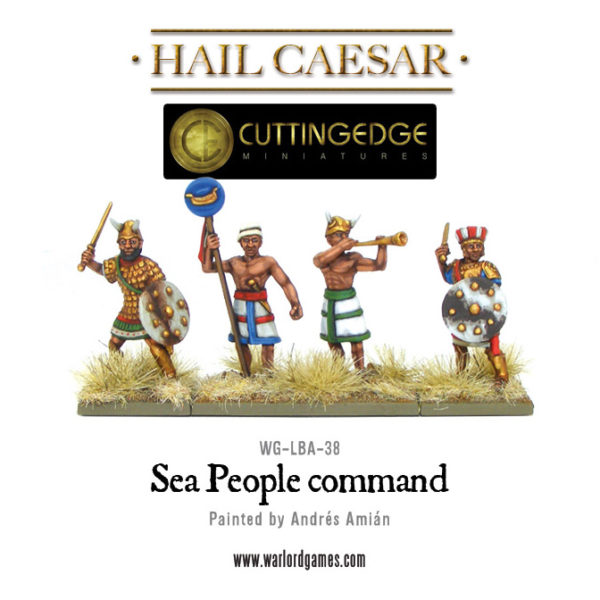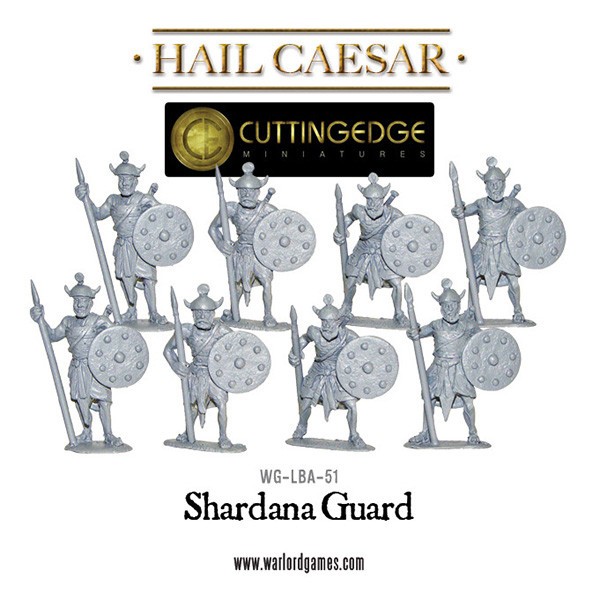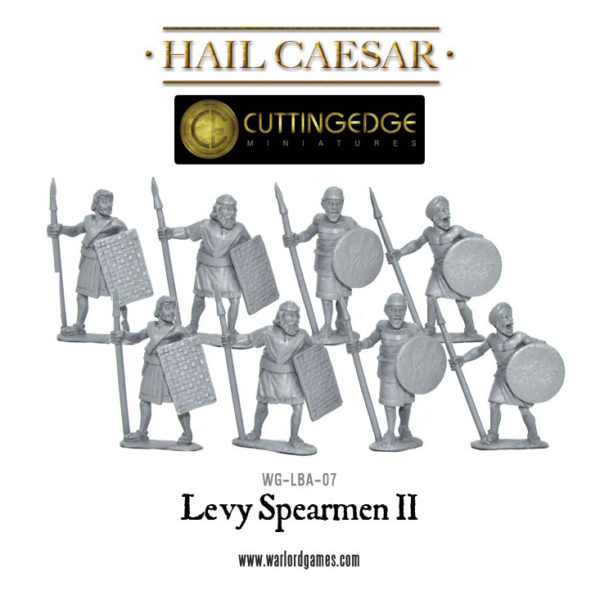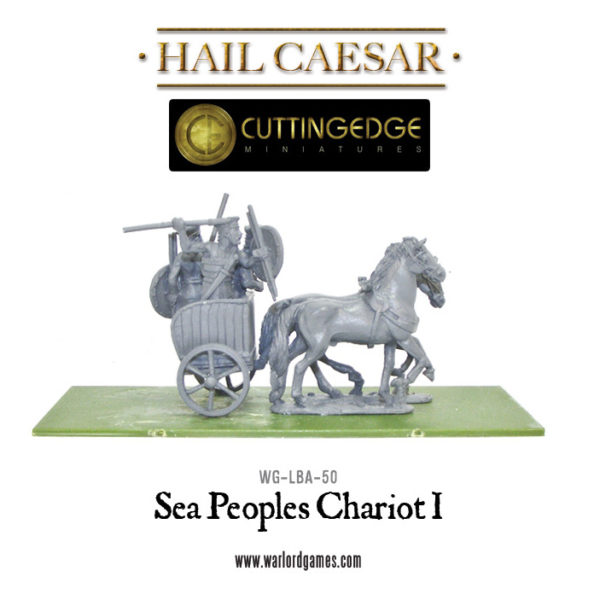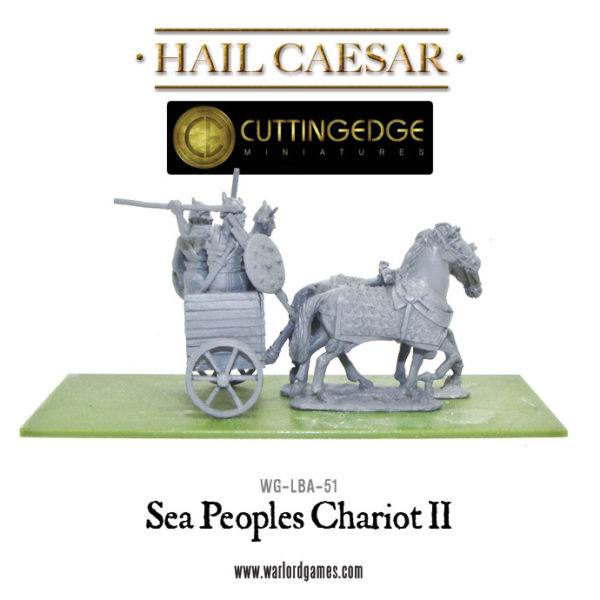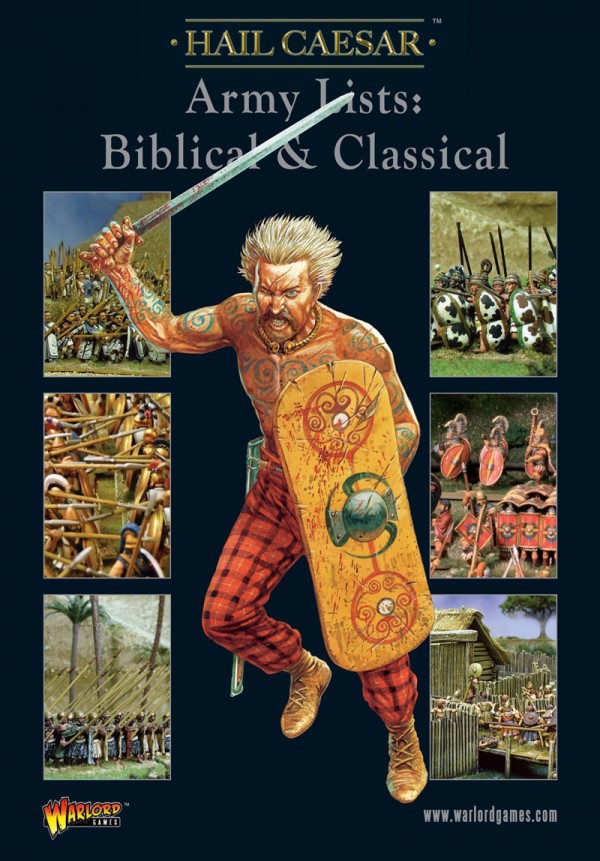The Sea Peoples, so named by a French Egyptologist at the end of the 19th century, are just one of many armies catered for within the Hail Caesar Range.
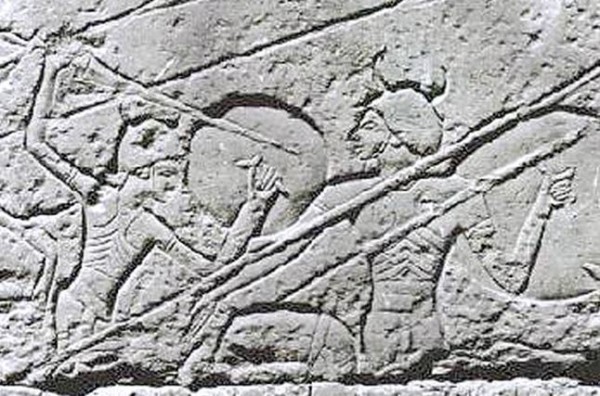 Sherden depicted at Medinet Habu – note that they appear to be fighting on both sides!
Sherden depicted at Medinet Habu – note that they appear to be fighting on both sides!
Their being named The Sea Peoples is also based upon Egyptian inscriptions and documentary records which identify 9 groups or tribes as belonging to the confederation of the “Peoples of the Sea”. They were the Peleset, Sherden, Lukka, Eqwesh, Weshesh, Shekelesh, Teresh, Tjekker and Denyen who invaded the coast of the eastern Mediterranean including Egypt towards the end of the Late Bronze Age. However, only the Sherden, Shekelesh and Eqwesh are actually referred to as “being from the sea” in Egyptian sources.
They first appear in Egyptian records in the mid-14th century BCE and then again in an account of attack by Sherden “pirates” upon the coast of Egypt. Ramesses II repulsed and defeated the Sherden, many prisoners were taken and they were subsequently incorporated into the Egyptian army as “Shardana Guardsmen”. They, along with other Sea People mercenaries and allies fought at the Battle of Kadesh against the Hittites who also had Sea People allies in their army.
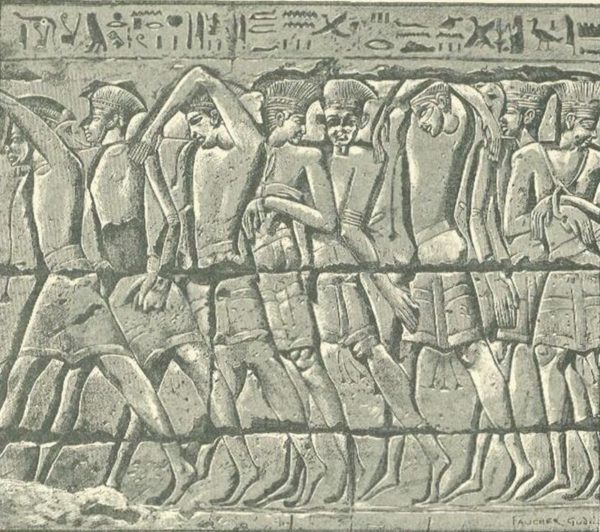 Sea People Captives from Medinet Habu
Sea People Captives from Medinet Habu
During the reign of Pharaoh Merneptah, the 4th ruler of the New Kingdom 19th Dynasty, the Egyptians fought against an army of Sea Peoples, who had allied with the Libyans in the western Nile delta. The most famous confrontation and which is recorded on the walls of the temple at Medinet Habu, occurred in the reign of Pharaoh Ramesses III, when a confederation of Peleset and Tjeker attacked in the Nile delta with the Libyans as allies but who were again defeated.
The precise origin of these tribes is disputed or unknown, but it is likely that many of them came from western Anatolia and the Aegean region. Indeed some of them may have been in fact Achaeans. The range of figures can therefore also be used in the armies of the Luiwian states of western Anatolia such as those of Ahhiyawa and Wilusa (Troy), mixed in with the Achaeans and some figures from the Hittites range, in Late Bronze Age armies.
It appears that the Sea Peoples brought down the Hittite Empire, together with pressure from Middle Kingdom Assyria and the Phrygians at the end of the Late Bronze Age, and which changed the status quo in the near east. If you want to learn more about these facinating peoples then check out our history of the Sea Peoples here.
The Range
This Cutting Edge range includes figures which are suitable for the building of the armies of all of the tribes of Sea Peoples and they are also suitable for the allies or mercenaries present in New Kingdom Egyptian, Libyan, Hittite and Achaean armies.
The complete list for the Sea Peoples can be found in Hail Caesar Army Lists: Biblical and Classical, which covers the invasions of the 12th century BC and makes provision for all the different allies.

